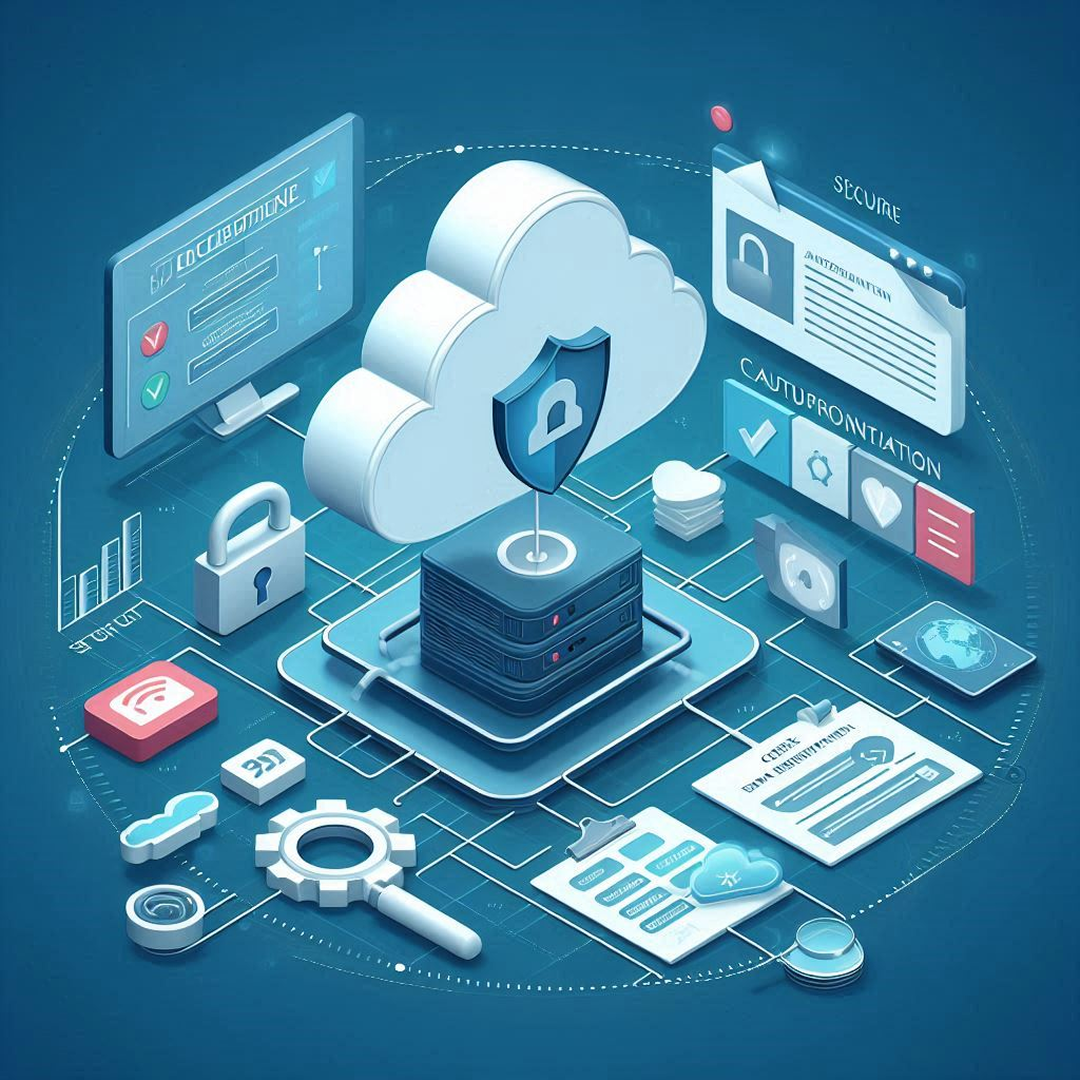
Securing data in the cloud is a multifaceted challenge that requires a comprehensive approach. As organizations increasingly migrate to cloud environments, the importance of implementing robust security measures cannot be overstated. This blog will delve into the best practices for securing data in the cloud, with a focus on Cloud Access Security Brokers (CASB), encryption, access control, compliance, and governance.
1. Understanding Cloud Security Fundamentals
Cloud security encompasses a wide range of policies, technologies, and controls deployed to protect data, applications, and infrastructure associated with cloud computing. The primary goal is to safeguard sensitive data from unauthorized access, data breaches, and other cyber threats.
Cloud environments can be categorized into three main types: public, private, and hybrid. Each type presents unique security challenges and requires tailored security strategies. Public clouds are shared environments, making them more susceptible to breaches. Meanwhile, private clouds offer greater control and security but may require more resources to manage.
2. Implementing a Multi-Layered Security Strategy
A multi-layered security approach is essential for protecting data in the cloud. This strategy involves deploying multiple security measures at different levels of the cloud architecture. This way, if one layer fails, others remain in place to protect the data.
2.1. Encryption
Encryption is one of the most effective methods for securing data in the cloud. It involves converting data into a coded format that can only be deciphered by authorized users. There are two main types of encryption to consider:
Encryption at Rest: This protects data stored on cloud servers. It ensures that even if an attacker gains access to the storage, they cannot read the data without the encryption keys.
Encryption in Transit: This secures data as it travels between the user and the cloud service provider. Using protocols like TLS (Transport Layer Security) helps prevent interception by unauthorized parties.
2.2. Access Control
Implementing strict access control measures is crucial for protecting sensitive data. This includes:
Role-Based Access Control (RBAC): Assigning permissions based on user roles within the organization ensures that individuals only have access to the data necessary for their job functions.
Multi-Factor Authentication (MFA): Requiring multiple forms of verification before granting access adds an extra layer of security.
Regular Access Audits: Conducting audits to review who has access to what data can help identify and revoke unnecessary permissions.
3. Regular Monitoring and Incident Response
Continuous monitoring of cloud environments is vital for detecting and responding to security incidents promptly. This includes:
Security Information and Event Management (SIEM): Implementing SIEM solutions allows organizations to collect and analyze security data in real-time, helping to identify potential threats.
Intrusion Detection Systems (IDS): These systems monitor network traffic for suspicious activity and can alert administrators to potential breaches.
Incident Response Plans: Developing and regularly updating incident response plans ensures that organizations can quickly react to security incidents, minimizing damage and recovery time.
4. Compliance and Governance
Compliance with industry regulations and standards is a critical aspect of cloud security. Organizations must ensure that their cloud environments adhere to relevant laws and regulations, such as GDPR, HIPAA, and PCI DSS.
4.1. Establishing Governance Policies
Governance involves creating policies and procedures that dictate how data is managed and protected in the cloud. This includes:
Data Classification: Categorizing data based on its sensitivity helps determine the appropriate security measures needed for protection.
Data Retention Policies: Establishing guidelines for how long data should be retained and when it should be deleted can help mitigate risks associated with data breaches.
Regular Compliance Audits: Conducting audits to ensure adherence to compliance standards helps organizations identify gaps in their security posture.
4.2. Utilizing Compliance Frameworks
Many organizations benefit from adopting established compliance frameworks, such as the Cloud Security Alliance (CSA) Security, Trust & Assurance Registry (STAR) or the NIST Cybersecurity Framework. These frameworks provide guidelines and best practices for securing cloud environments and achieving compliance.
5. Training and Awareness
Human error is often a significant factor in data breaches. Therefore, training employees on cloud security best practices is essential. This includes:
Security Awareness Training: Educating employees about common threats, such as phishing attacks and social engineering, can help reduce the risk of human error.
Regular Training Updates: Providing ongoing training ensures that employees stay informed about the latest security trends and practices.
6. Leveraging Security Tools and Technologies
Organizations should leverage various security tools and technologies to enhance their cloud security posture. This includes:
Data Loss Prevention (DLP): DLP solutions help monitor and protect sensitive data from unauthorized access and sharing.
Cloud Access Security Brokers (CASB): CASBs provide visibility and control over cloud applications, helping organizations enforce security policies and compliance.
Endpoint Security Solutions: Protecting endpoints, such as laptops and mobile devices, is crucial for preventing breaches that could compromise cloud data.
7. Conclusion
Securing data in the cloud is an ongoing process that requires a proactive approach. By implementing a multi-layered security strategy, leveraging CASB solutions, establishing governance policies, and fostering a culture of security awareness, organizations can significantly reduce their risk of data breaches.
As cloud technology continues to evolve, staying informed about the latest security trends and best practices will be essential. The importance of cloud security in modern IT infrastructure cannot be overstated. Organizations must continually assess and adapt their security measures to address emerging threats and protect their valuable data in the cloud.
Do you like to read more educational content? Read our blogs at Cloudastra Technologies or contact us for business enquiry at Cloudastra Contact Us.